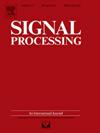CurvPnP: Plug-and-play blind image restoration with deep curvature denoiser
IF 3.4
2区 工程技术
Q2 ENGINEERING, ELECTRICAL & ELECTRONIC
引用次数: 0
Abstract
Due to the development of deep learning-based denoisers, the plug-and-play strategy has achieved great success in image restoration problems. However, existing plug-and-play image restoration methods are designed for non-blind Gaussian denoising such as Zhang et al. (2022), the performance of which visibly deteriorates for unknown noise. To push the limits of plug-and-play image restoration, we propose a novel image restoration framework with a blind Gaussian prior, which can deal with more complicated image restoration problems in the real world. More specifically, we build up a curvature regularization image restoration model by regarding the noise level as a variable, where the regularization term is realized by a two-stage blind Gaussian denoiser consisting of a noise estimation subnetwork and a denoising subnetwork. We also introduce curvature regularization into the encoder–decoder architecture and the supervised attention module to achieve a highly flexible and effective network. Numerous experimental results are provided to demonstrate the advantages of our deep curvature denoiser and the resulting plug-and-play blind image restoration method over the state-of-the-art denoising methods. Our model is shown to be able to recover fine image details and tiny structures even when the noise level is unknown for different image restoration tasks. The source codes are available at https://github.com/Duanlab123/CurvPnP.
CurvPnP:即插即用的盲图像恢复与深曲率去噪
由于基于深度学习的去噪器的发展,即插即用策略在图像恢复问题中取得了巨大的成功。然而,现有的即插即用图像恢复方法是为非盲高斯去噪而设计的,如Zhang等人(2022),对于未知噪声,其性能明显下降。为了突破即插即用图像恢复的局限性,我们提出了一种新的基于盲高斯先验的图像恢复框架,该框架可以处理现实世界中更复杂的图像恢复问题。具体而言,我们以噪声水平为变量,建立了曲率正则化图像恢复模型,其中正则化项由噪声估计子网络和去噪子网络组成的两级盲高斯去噪器实现。我们还在编码器-解码器架构和监督注意模块中引入曲率正则化,以实现高度灵活和有效的网络。大量的实验结果证明了我们的深曲率去噪器和由此产生的即插即用的盲图像恢复方法优于最先进的去噪方法。我们的模型被证明能够恢复精细的图像细节和微小的结构,即使在噪声水平未知的情况下,对于不同的图像恢复任务。源代码可从https://github.com/Duanlab123/CurvPnP获得。
本文章由计算机程序翻译,如有差异,请以英文原文为准。
求助全文
约1分钟内获得全文
求助全文
来源期刊

Signal Processing
工程技术-工程:电子与电气
CiteScore
9.20
自引率
9.10%
发文量
309
审稿时长
41 days
期刊介绍:
Signal Processing incorporates all aspects of the theory and practice of signal processing. It features original research work, tutorial and review articles, and accounts of practical developments. It is intended for a rapid dissemination of knowledge and experience to engineers and scientists working in the research, development or practical application of signal processing.
Subject areas covered by the journal include: Signal Theory; Stochastic Processes; Detection and Estimation; Spectral Analysis; Filtering; Signal Processing Systems; Software Developments; Image Processing; Pattern Recognition; Optical Signal Processing; Digital Signal Processing; Multi-dimensional Signal Processing; Communication Signal Processing; Biomedical Signal Processing; Geophysical and Astrophysical Signal Processing; Earth Resources Signal Processing; Acoustic and Vibration Signal Processing; Data Processing; Remote Sensing; Signal Processing Technology; Radar Signal Processing; Sonar Signal Processing; Industrial Applications; New Applications.
 求助内容:
求助内容: 应助结果提醒方式:
应助结果提醒方式:


